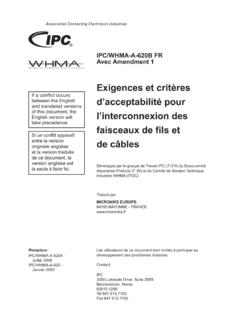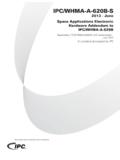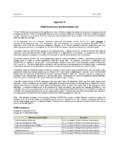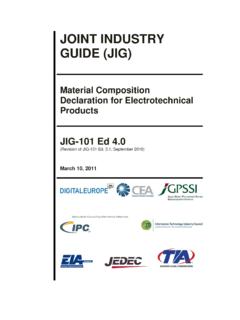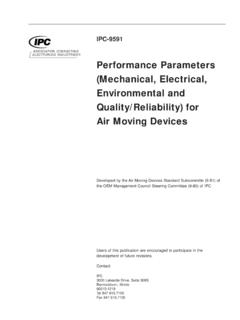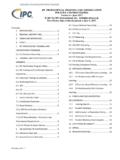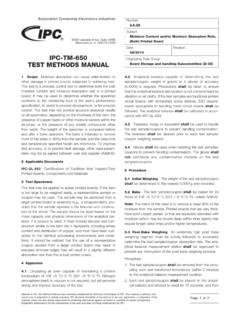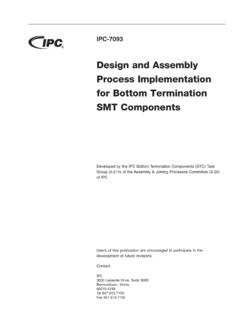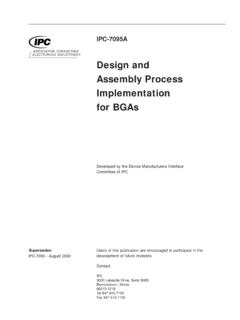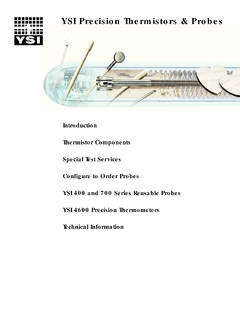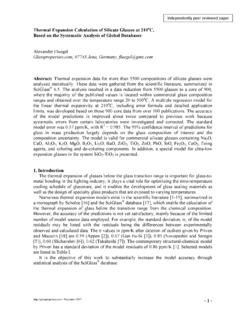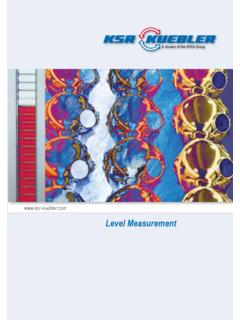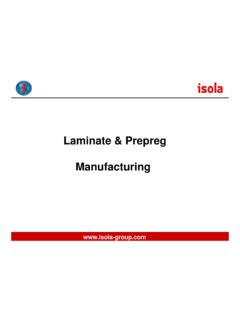Transcription of Glass Transition Temperature and Z-Axis Thermal …
1 ScopeThis test is designed to determine the GlassTransition Temperature (Tg) and the Thermal Expansion in theZ-Axis of dielectric materials used in printed boards by the useof Thermal mechanical analysis (TMA). Thermal Expansion (TE) is expressed in Coefficient of ThermalExpansion (CTE) or Percent of Thermal Expansion (PTE). Applicable Test SizeSpecimens shall be approximately mm mm [ in x in]. The thickness shall be a minimumof mm [ in]; for thicknesses less than mm[ in], or to increase the accuracy of the test, see Quantity and SamplingUnless otherwise specified,two specimens shall be tested, to be taken from random loca-tions of the material in Apparatus or analyzer (TMA) capable of determi-nation of dimensional change to within mm [ in]over the specified Temperature blade or wheel, sanding equipment, or equiva-lent, to provide a specimen of the size and edge quality capable of an atmosphere less than 30% at 23 C [ F].
2 System capable of complete removal of circulating oven capable of maintaining 105 2 C[221 F]. capable of thickness measurements towithin mm [ in]. Specimen clad laminate shall be tested without the clad-ding. Specimens taken from multilayer boards shall have nointernal metal layers, if possible. Exterior metallic cladding shallbe removed by etching using standard industry shall be cut to the specified size usingappropriate procedures and equipment to minimize mechani-cal stress or Thermal edges shall be smooth and burr-free by means ofsanding or equivalent (to allow the specimen to rest com-pletely flat on the mounting stage). Use care to minimizestress or heat on the shall be preconditioned by baking for 2 hours, at 105 2 C [221 F], then cooled to roomtemperature in a applicable, determine the thickness of the specimen(for determination of Percent of Thermal Expansion) andrecord as the specimen on the stage of the TMA andapply a load between g and g (see note forexplanation of the load selection criteria).
3 Initial Temperature for Startupa. For Tgdetermination, start the scan at a Temperature nohigher than 35 C [95 F]. An initial Temperature of 23 C[73 F] is For TE determination start the scan at a Temperature suf-ficiently lower than the specified Temperature range suchthat the specified heat rate is stabilized (see ). otherwise specified, maintain the scan rate at10 C [18 F] per Temperature Excursiona. For Tg determination, continue the Temperature ramp toat least 30 C [54 F] above the anticipated For TE determination, continue the Temperature ramp toThe Institute for Interconnecting and Packaging Electronic Circuits2215 Sanders Road Northbrook, IL 60062-6135 IPC-TM-650 TEST METHODS Transition Temperature and Z-Axis ThermalExpansion by TMADate12/94 RevisionCOriginating Task GroupMIL-P-13949 Test Methods Task Group (7-11b)Material in this Test Methods Manual was voluntarily established by Technical Committees of the IPC.
4 This material is advisory onlyand its use or adaptation is entirely voluntary. IPC disclaims all liability of any kind as to the use, application, or adaptation of thismaterial. Users are also wholly responsible for protecting themselves against all claims or liabilities for patent referenced is for the convenience of the user and does not imply endorsement by the C [482 F] or other Temperature as specified (suchas, representative of a soldering operation).For example, determination of Tgon a material with an antici-pated Tgof 270 C [518 F] would require that the test tem-perature should reach in excess of 300 C [572 F]. TE mea-surements should be determined only from that part of theplot reaching 250 C [482 F] (or other Temperature of interest). residual stresses cause a sudden irreversible deflec-tion at the Glass Transition , a second scan shall be run, eitheron the same specimen or if desired, a new data for the scan should resemble the plot asshown in Figure the TMA plot, record the thickness of the speci-men as four points: Temperature A shall be chosen justabove room Temperature , , 25 C [77 F].
5 temperatures B and C shall be chosen such that they are on the linearportion of the graph, but just below and above the transitionregion, respectively. Temperature D shall be selected torepresent a Temperature of interest, such as a solderingoperation. Unless otherwise specified, Temperature D shallbe 250 C [482 F]. Glass Transition TemperatureDetermine the pointat which lines drawn through points A and B and points C andD will intersect. The Temperature at which the tangent linesintersect is the Coefficient of Thermal Expansion in the Z-AxisThe CTE shall be calculated over the specified regions andrecorded in units of ppm/ CTE Below the Glass Transition (A B)=(tB tA)106tA(TB TA)b. CTE Above the Glass Transition . (C D)=(tD tC)106tC(TD TC)c. CTE from Near Room Temperature to 250 C.(Or Other Temperature of Interest) (A D)=(tD tA)106tA(TD TA)Where:TA= Temperature at point A on plotTB= Temperature at point B on plotTC= Temperature at point C on plotTD= Temperature at point D on plottA= Thickness at TAtB= Thickness at TBtC= Thickness at TCtD= Thickness at Percent of Thermal Expansion in the the Temperature range over which the expan-sion in percentage shall be determined.
6 The temperaturerange from point A to point D is considered most Transition Temperature and Z-Axis Thermal Expansion byTMADate12 PTE is calculated as follows:Percent TE = tD tATOx 100 Whereto= Initial thickness (see )tD= Thickness at Temperature DtA= Thickness at Temperature the Glass Transition Temperature of each the TE as CTE in ppm/ C or as PTE in percent-age, and the Temperature ranges over which the TE has beendetermined. If specified, report the CTE over the temperatureranges above and below the Tg(A-B and C-D). the scan rate and final TE Temperature if otherthan that of the TMA must be carried out according tothe manufacturer s Tg for a given material may be significantly differentwhen measured by DSC versus TMA. The test equipmentused should be noted after the reported Glass Transition value, , (DSC) or (TMA). Thermal analysis equipment have the softwarecapability to determine Tgand CTE values; it is recommendedthat this approach be used for consistency, provided testparameters ( , temperatures , edge smoothing factors, etc.)
7 Do not conflict with the procedures improve the accuracy of the test, the thicknessshould be at least mm [ in] and preferably mm[ in]. If the material thickness to be measured is less inch, a specimen stack-up to at least mm [ ] may be used although the test error probability is greatlyincreased. A sample of suitable thickness may be preparedfrom the prepreg used in the manufacture of the base mate-rial by laminating and curing as recommended by the thickness should not exceed mm [ in] toavoid variability from Thermal gradients occurring within selection criteria. Initial load is recommended to be5g. The load should be adjusted for differences in materialtypes or specimen configuration in order to assure intimatecontact between the probe, specimen, and stage. Avoidexcess load which may result in penetration or distortion ofthe Temperature for starting the scan is determined byan evaluation of the derivative of the time/ Temperature curvefor the equipment.
8 Test data is not valid until the time/ Temperature curve is stabilized. Refer to operating instructionof the equipment for additional Desiccator ConditionsThe Test Methods Task Groupdetermined that a great majority of test laboratories are unableto consistently hold the Relative Humidity in a desiccator toless than 20%. Based on data from participating company labmanagement, the lowest practically feasible RH for use withthe affected IPC Test Methods is 30% Transition Temperature and Z-Axis Thermal Expansion byTMADate12/94 RevisionCPage3of3
